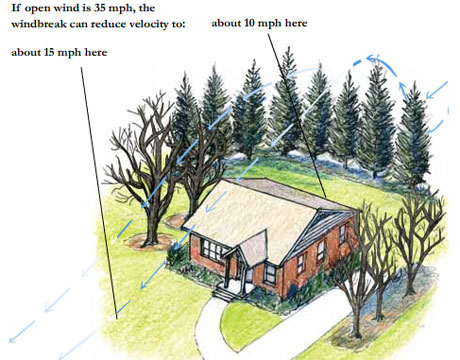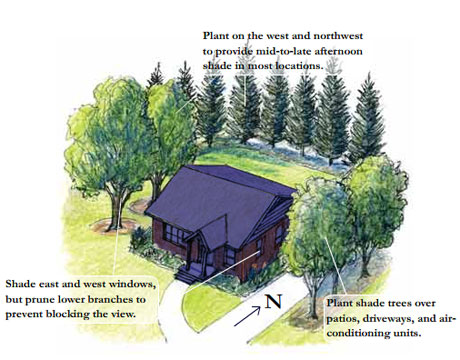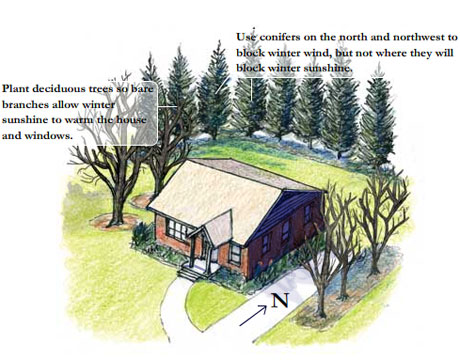Planting the right trees in the right places conserves energy and reduces your energy bills, while helping to fight global warming. This helps…
Winter Windbreak

Conifer trees planted near your home will help block winter winds and reduce heating costs. Planting a row of conifer trees on the north and northwest sides of your property creates a wall against cold winter winds—saving your heating costs by up to 30%. The best protection from wind occurs when the windbreak is no more than the distance of one or two tree heights from the house. The down-wind side of the trees is where the most snow accumulates, so plant your windbreak a one or two tree-height distance from your rooftop and driveway if you can.
Summer Shade

Large deciduous trees planted on the east, west, and northwest sides of your home create soothing shade from the hot summer sun and reduce summer air conditioning costs by up to 35 percent. Plant trees to shade your air conditioner to help keep it cooler and running more efficiently. And trees that shade patios, sidewalks, and driveways, cool the concrete, the entire yard and even the neighborhood.
Winter Warmth

After the leaves fall, the sun pours through tree branches to warm your home in winter. The sun travels lower on the southern horizon in winter, so you’ll want to avoid planting evergreen trees on the south side of your home where they’ll block winter sunshine. Instead, plant an evergreen conifer windbreak on the north and northwest of your home to block cold winter winds.
